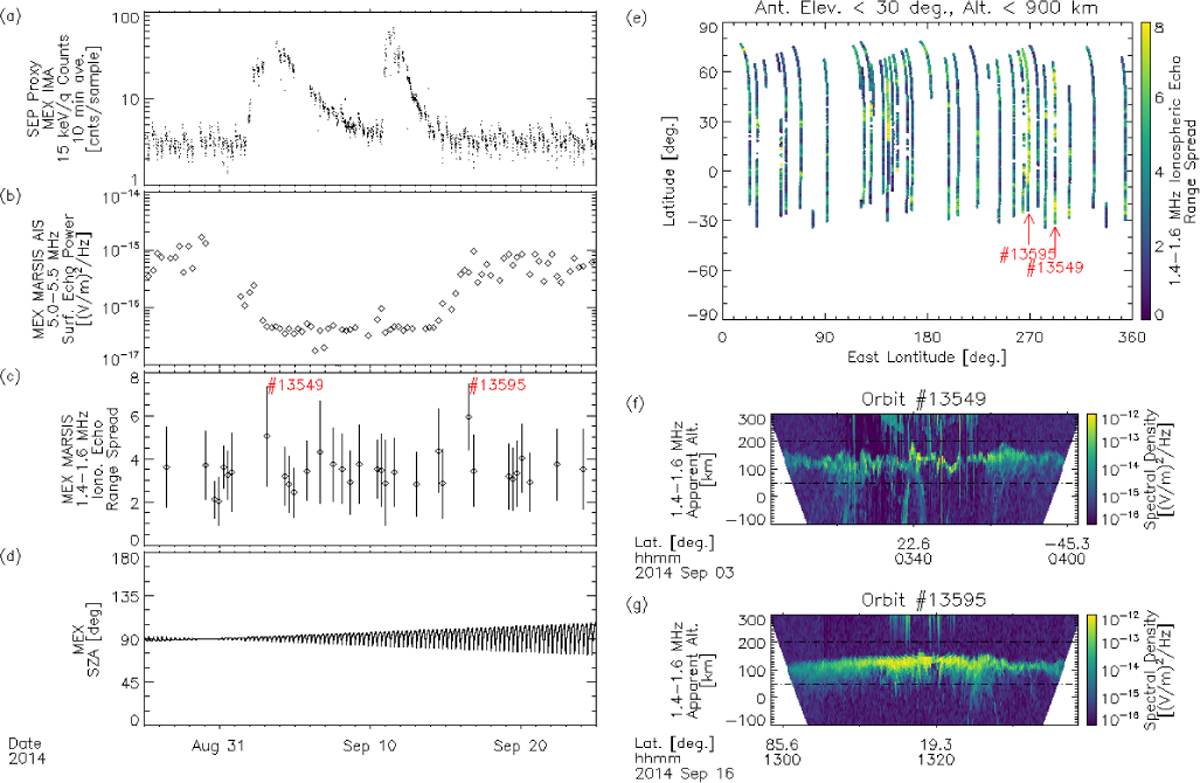Fig. 8

Download original image
Overview of MEX observations of the Martian ionospheric response to the September 2014 space weather event. Time series data of (a) 10-min averaged counts of Mars Express IMA in the highest energy channel representing the background level, which can be used as a proxy for SEP protons (Futaana et al. 2008), (b) 5–5.5 MHz surface echo power measured by MARSIS, the reduction of which indicates radio absorption in the lower ionosphere of Mars, derived in the same manner as (Harada et al. 2023), (c) range spread of 1.4–1.6 MHz ionospheric echoes derived from periapsis MARSIS observations, showing the level of ionospheric irregularities in the topside ionosphere of Mars (Harada et al. 2018a), and (d) solar zenith angle of Mars Express. Panel e: geographic map of periapsis MARSIS observations, with colors indicating the range spread of 1.4–1.6 MHz ionospheric echoes. Radargrams demonstrate the range spread of 1.4–1.6 MHz ionospheric echoes for orbits (f) 13549 and (g) 13595.
Current usage metrics show cumulative count of Article Views (full-text article views including HTML views, PDF and ePub downloads, according to the available data) and Abstracts Views on Vision4Press platform.
Data correspond to usage on the plateform after 2015. The current usage metrics is available 48-96 hours after online publication and is updated daily on week days.
Initial download of the metrics may take a while.


